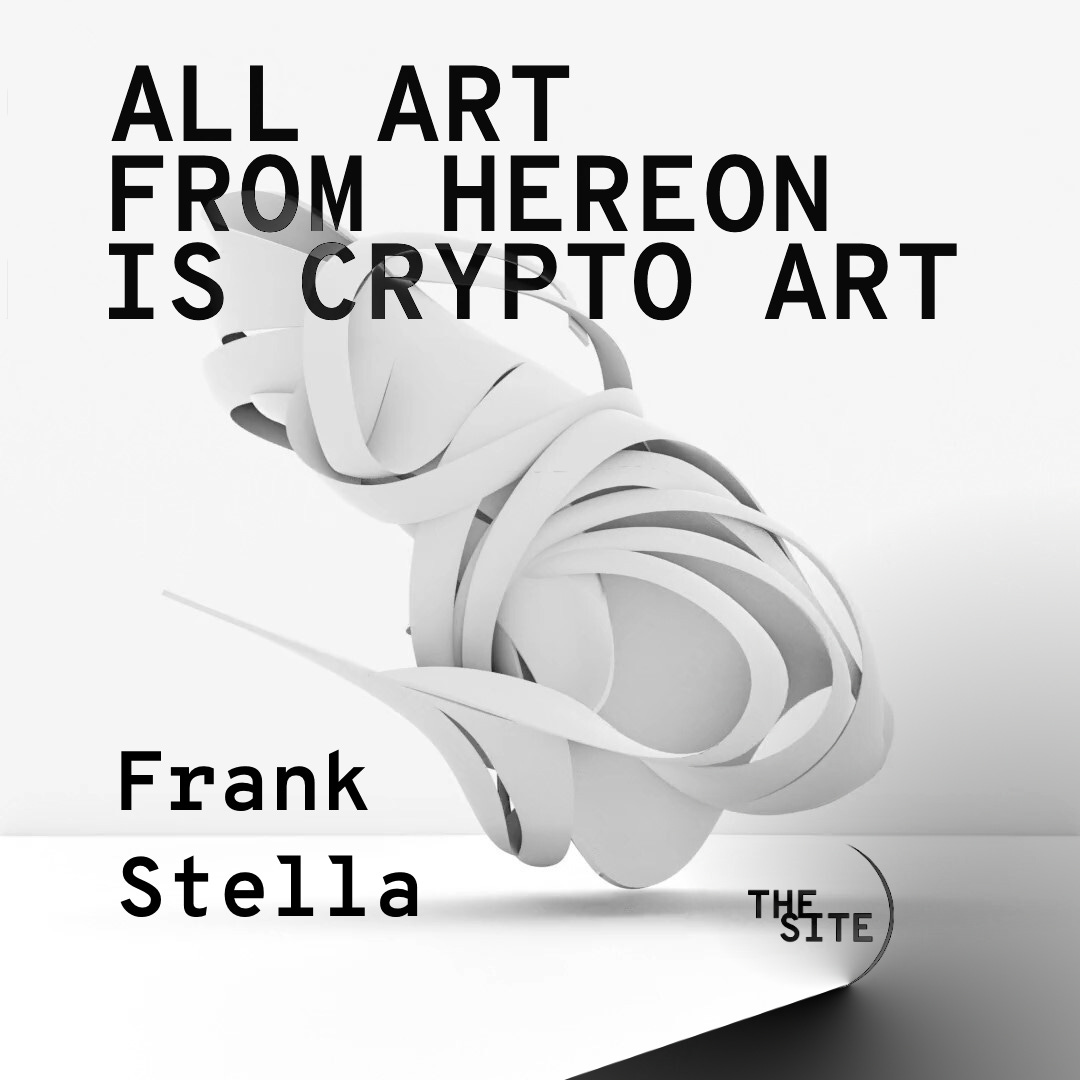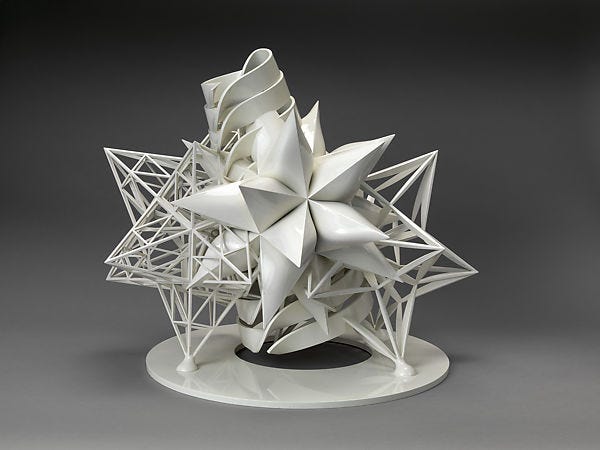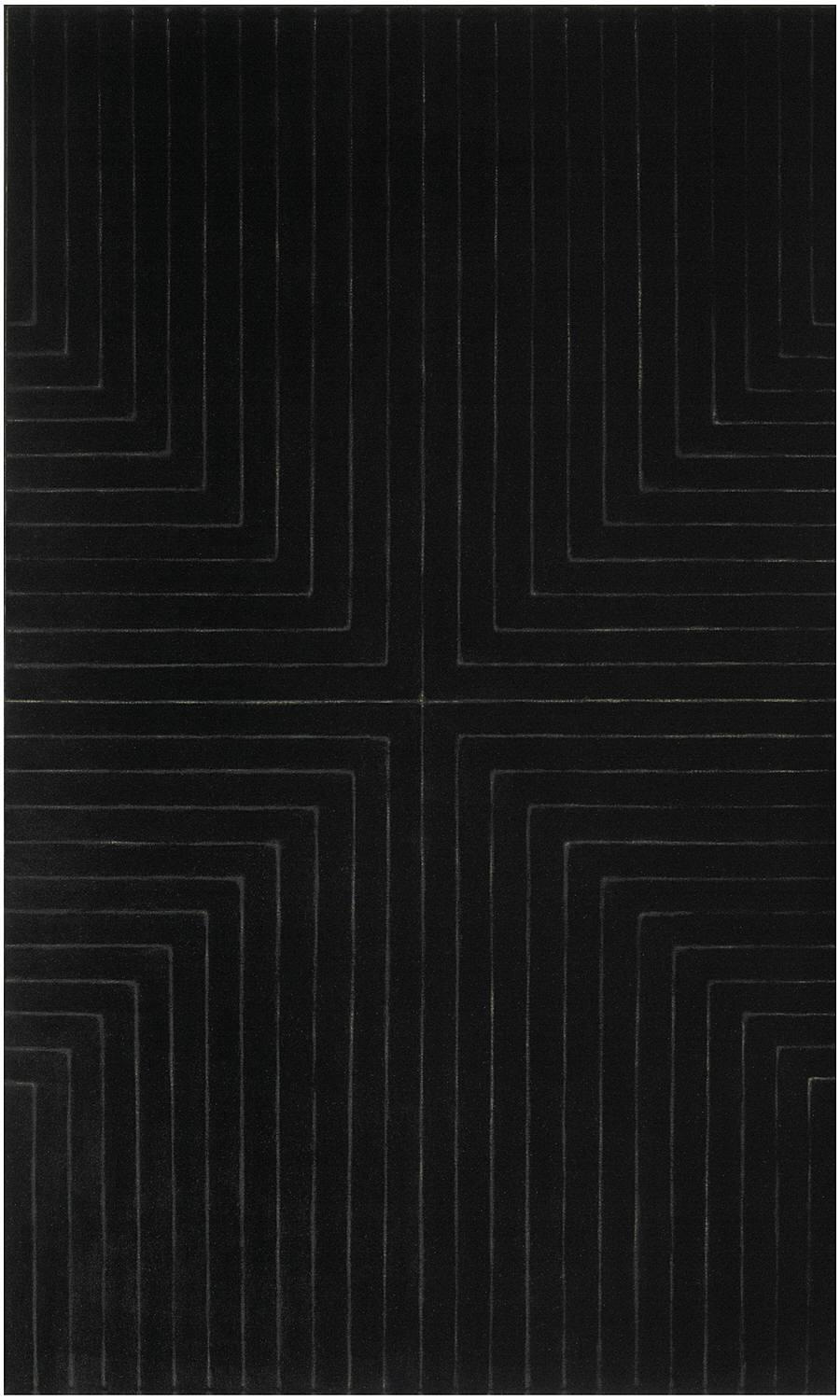
All Art From Hereon Is Crypto Art is where we highlight artworks and art-related developments affirming THE SITE’s non-categorical appraisal of crypto (NFT) art as de facto denomination of future artworks, rather than insular views of the phenomenon in taxonomical terms; whether as an aesthetic, category, art movement, art interfacing blockchain technology, an old or new medium; as discussed in the GENESIS essays, ADD+ART International Conference et al. by Arian Bagheri Pour Fallah.
William Blake, James Ensor, Victor Vasarely, Hokusai, Lucas Samaras, Keith Haring, and now, Frank Stella.
A year ago, the notion that “All art, from hereon, is crypto art“ seemed far-fetched to NFT enthusiasts and critics alike. Today, the claim may no longer be as strange, yet is one that requires continuous reiteration.
The tendency to associate an emerging technology with case-specific uses of it is about as prevalent in blockchain as in Artificial Intelligence (AI). Yet, time has only proven insular views of the phenomenon, including yet not limited to an aesthetic, category, and medium, to be mere category mistakes.

Geometries, a series of 22 sculptures by Frank Stella, recently released by **ARSNL **as NFTs with 100 editions of each piece, marks the latest general use-case of the technology by an established, in this case alive, artist. Chosen from Stella’s late, computer-aided works, the approach mirrors Pace Gallery’s similar decision to tokenize Samaras’ XYZ series, from earlier last year — both immediately recognizable for their aesthetic and technical rapport with computer art. In Stella’s case, however, ARSNL’s varied approach to file formats, ranging from image and video to augmented and virtual reality (AR/VR) and 3D printing, deserves extra credit, alongside a more transparent, open auction.
Stella’s endeavors concerning copyrights, among others with the Artists Rights Society, albeit fundamentally different from THE SITE’s approach, per Artistic Commons 0 (AC0), are notable even if geographically and ontologically limited attempts to resolve the many deadlocks faced by artists in the Information Age. In case of Geometries, the Collector’s Rights document, furthermore, points to the right to “create derivatives,” “create 3D prints,” “use and display the NFT, artwork, and models for noncommercial purposes,” “resell the NFT on any platform or in any marketplace that recognizes the Resale Royalty.” Again, significant improvements when compared to nearly all other examples noted earlier, including Samaras, as well as the majority of crypto- and/or Internet-native works, even if following a conventional ontology of art.
Nevertheless, Stella’s recent, gentle dismissal of generative art in being primarily informed by ‘mathematical or social ideas,’ is a testament to his singular perspective and an instance where we find ourselves in general agreement, even if pointing out different reasons — contrasting generative art as a strictly conceptual category not with formalist and pictorial values but rather querying the ‘need’ for such cultural tribalism at a time of incessant economic and societal peril.
Here at THE SITE, Stella’s early Black Paintings remain our favorites, second only to Pierre Soulages’ outrenoir. Having said that, we believe Geometries to be a crucial addition to and affirmation of crypto art as de facto denomination of future artworks. “Die Fahne hoch!”

To read and learn more about the idea that “All art, from hereon, is crypto art,“ uncoil GENESIS by collecting the Blackpaper and entering THE SITE’s Academy sector.
The publication sector of THE SITE is open to the public, without any paywalls, as a result of its underlying token design. To support and ensure it remains open, join THE SITE.
THE SITE is an ethos-gated art community, publication and academy. In THE SITE, “every human being will be an artist.”